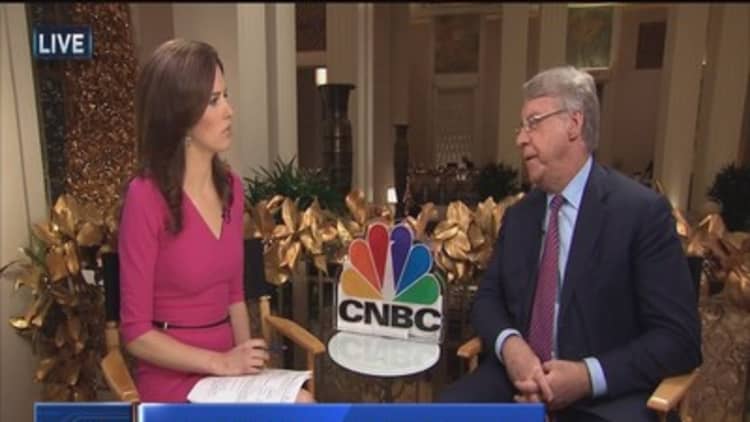Oil prices settled lower Friday after the release of U.S. oil rig count data and amid growing oversupply concerns.
U.S. oil rigs rose by 17 — snapping a four-week declining streak — and now total 541, Baker Hughes said Friday. The total number of rigs remains significantly lower than last year, having fallen by 995 in that time.
Global benchmark Brent crude traded 26 cents lower, at $36.80 a barrel. U.S. crude futures settled at $34.73 a barrel, down 0.6 percent, or 22 cents, after trading near a seven-year low of $34.39 a barrel. Earlier, both benchmarks gained more than 1 percent on short covering.
US oil this week
The global supply glut that brought prices close to 11-year lows this week means Brent will post losses for a third consecutive year, the first time that has happened since exchange-based oil trading started in the 1980s.
West Texas Intermediate (WTI) futures are set for a second straight yearly loss, the first time that will have happened for the U.S. oil pricing benchmark since 1998.

"Prices are falling on continued bearish sentiment and maybe WTI has fallen on the conviction that it was priced too high against Brent," said Carsten Fritsch, senior oil analyst at Commerzbank in Frankfurt.
The WTI-Brent spread fell to the lowest in 11 months earlier this week at $1.10 a barrel. The differential has since recovered to $2.10 as WTI made bigger losses.
Traders were preparing for even lower crude prices next year by taking up more put options to sell U.S. crude in February should prices fall to $30, $25 or even $20 per barrel, according to Reuters data.
"I think everyone's assumptions heading into the first quarter of next year was that there was going to be some sort of agreement on how to accommodate Iranian barrels. If Iranian barrels come into the market, and the Saudis keep on producing as much as they have in recent quarters, the market is going to go down again," Francisco Blanch, analyst at Bank of America Merrill Lynch, told CNBC's "Squawk on the Street" on Friday.
Prominent oil trader Pierre Andurand said prices could fall below $25 a barrel in the first quarter of 2016.
"Recent developments on the supply side continue to point toward inventory builds that will put pressure on oil prices to bring them further down to below $30/bbl (barrel) and possibly at/below $25/bbl in the first quarter of 2016," Andurand wrote in a letter reviewing the Andurand Capital Management fund's performance through November, seen by Reuters.
Russia, one of the world's top oil producers, said on Friday it was not considering coordinating its output policy with OPEC members, adding the organization was not exerting as much influence as it did in the 1970s and 1980s.
Russia has long maintained informal contacts with OPEC and hinted in the past it might be ready to cut oil production to prop up prices.
The seemingly unstoppable decline in oil is raising concerns about investment in future supplies, IEA Executive Director Fatih Birol said on Friday in Singapore.
"The current low oil price makes me worried because it means lower investments in new oil projects," he said.
"This year, oil investments declined more than 20 percent and more importantly we expect it will decline next year as well," Birol said.
"We have never seen in the last 30 years oil investments decline two years in a row in the world."

